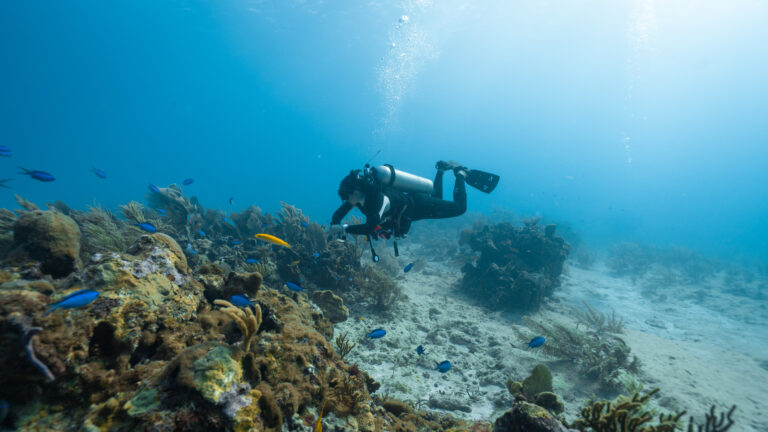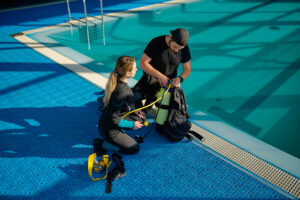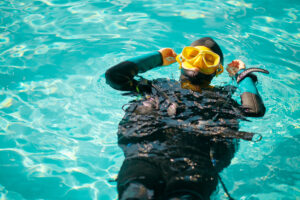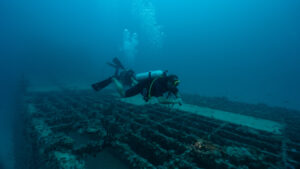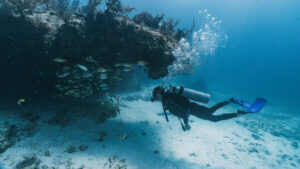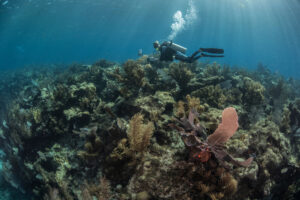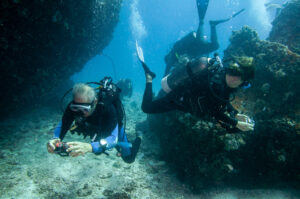What is a Regulator Freeze when Scuba Diving?
Scuba diving is a popular underwater recreational activity that allows divers to explore the underwater world. A crucial component of scuba diving equipment is the regulator, which delivers breathing gas from the tank to the diver at a safe and comfortable pressure. One of the potential hazards faced by divers, particularly in cold water conditions, is regulator freeze. This phenomenon can lead to a malfunction of the regulator mechanism, causing it to lock open and result in a free flow of air. This article will discuss the causes, consequences, and preventive measures related to regulator freeze.
Causes of Regulator Freeze
A regulator freeze occurs when water inside the regulator mechanism freezes, causing the components to lock up and ultimately malfunction. This usually happens in cold water diving conditions, typically in water temperatures below 50°F (10°C). There are several factors that contribute to the freezing of a regulator, including:
- Water temperature: As mentioned earlier, cold water increases the likelihood of regulator freeze. The colder the water, the higher the risk.
- Humidity: Moisture from the surrounding environment or the diver’s breath can enter the regulator, increasing the chances of freezing.
- Pressure drop: As gas passes through the regulator, it undergoes a significant pressure drop. This causes the temperature of the gas to decrease, which can contribute to freezing within the regulator.
- Use of Nitrox: Nitrox, a gas mixture of nitrogen and oxygen, is often used in scuba diving to extend bottom times and reduce the risk of decompression sickness. However, the higher concentration of oxygen in Nitrox can increase the likelihood of regulator freeze due to the greater cooling effect when the gas expands.
Consequences of Regulator Freeze
A regulator freeze can lead to a number of problems for the diver, some of which may be life-threatening. These include:
- Free flow: The primary consequence of regulator freeze is free flow, where the regulator mechanism locks open and continuously releases air from the tank. This can result in a rapid loss of breathing gas, potentially leaving the diver without an air supply underwater.
- Panic and rapid ascent: The sudden onset of free flow may cause the diver to panic, leading to a rapid ascent. This increases the risk of decompression sickness or arterial gas embolism, both of which can be life-threatening.
- Loss of buoyancy control: The excessive flow of air from the regulator may disrupt the diver’s buoyancy control, making it difficult to maintain a stable position in the water.
Prevention and Management of Regulator Freeze
There are several preventive measures that divers can take to minimize the risk of regulator freeze, as well as strategies for managing the situation if it occurs:
- Environmental awareness: Divers should be aware of the water temperature and other environmental factors that may contribute to regulator freeze. If diving in cold water, it is important to plan for the increased risk and prepare accordingly.
- Regulator selection: Some regulators are specifically designed for cold water diving, featuring environmentally sealed first stages or heat exchange fins to help prevent freezing. Divers should choose regulators that are suitable for the conditions in which they plan to dive.
- Pre-dive inspection: Before diving, it is important to thoroughly inspect the regulator for any signs of damage or wear that could contribute to a freeze. This includes checking for moisture, ice, or debris inside the regulator.
- Use of drysuit: Wearing a drysuit can help to insulate the diver from the cold water, reducing the risk of regulator freeze.
- Controlled ascent: If a regulator freeze does occur, it is essential to remain calm and manage the situation safely. This includes signaling to a buddy or dive leader, closing the tank valve to stop the free flow, and making a controlled ascent to the surface. The diver should also be prepared to use an alternate air source, such as an octopus or a buddy’s regulator, if necessary.
- Redundant air source: Carrying a redundant air source, such as a pony bottle or a spare air system, can provide an additional layer of safety in the event of a regulator freeze. This allows the diver to switch to an alternate air supply and make a controlled ascent to the surface.
- Proper maintenance: Regular servicing and maintenance of diving equipment, particularly the regulator, can help prevent issues like regulator freeze. Divers should follow the manufacturer’s guidelines for servicing intervals and use only authorized service centers.
- Proper breathing technique: Using proper breathing techniques, such as slow and deep breaths, can help reduce the moisture content within the regulator and lower the risk of regulator freeze.
- Purge button discipline: Avoiding unnecessary use of the purge button on the second stage of the regulator can help reduce the likelihood of regulator freeze. Excessive purging can cause a rapid flow of cold gas through the regulator, increasing the risk of freezing.
- Post-dive care: After diving, it is important to rinse the regulator thoroughly with fresh water to remove any salt, sand, or debris. This helps prevent corrosion and ensures the proper functioning of the regulator during future dives.
Key Takeaways
Regulator freeze is a serious issue that can lead to dangerous situations for scuba divers, particularly in cold water environments. By understanding the causes, consequences, and preventive measures associated with regulator freeze, divers can take steps to minimize the risk and ensure a safe and enjoyable diving experience. Proper equipment selection, maintenance, and diving practices are key to preventing regulator freeze and managing the situation if it does occur.

